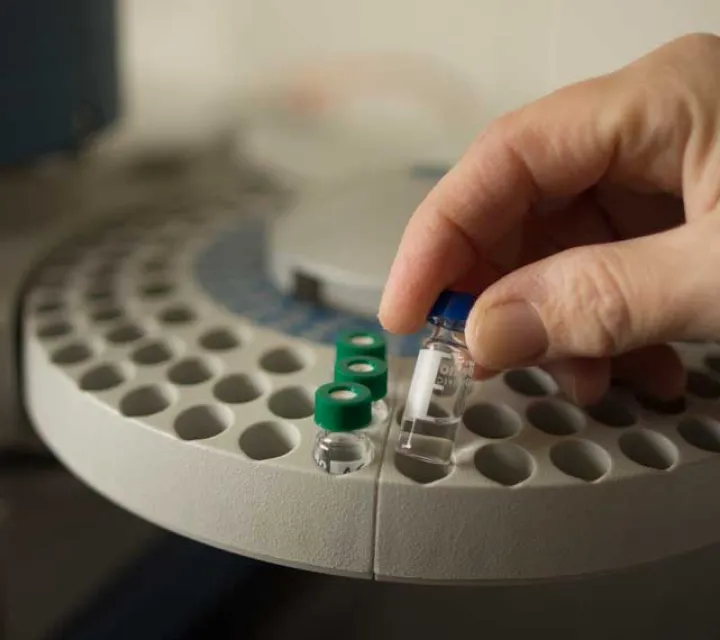The Marietta College Department of Chemistry and Biochemistry is an American Chemical Society approved program offering majors in both chemistry and biochemistry. The department graduates approximately 5-10 chemistry/biochemistry majors annually, in addition to a few chemistry minors. We offer both an ACS-certified and a non-ACS-certified major in chemistry. The department is committed to providing a high-quality education to its students, as described in its vision, mission, and goals.
The faculty of the Department of Chemistry and Biochemistry consist of four Ph.D. chemists with expertise in the five major areas of chemistry: analytical, inorganic, organic, physical, and biochemistry. All courses in the Department of Chemistry are taught by these four faculty members.
The department offers its students all of the traditional chemistry courses, as well as independent research opportunities during their junior and/or senior years. In addition, students may take a chemical laboratory techniques course during their freshman year, in which they are given access to all of the research instrumentation in the department. This is a rare, and exciting, opportunity for students to be exposed to advanced chemical instrumentation during their first year of college. For a listing of the courses needed for majors in chemistry or biochemistry, or a minor in chemistry, visit the major/minor page.
The Department of Chemistry and Biochemistry is located in the Selby-Bartlett-Rickey science complex. All of the laboratory courses are taught in the brand new (opened spring 2003) chemistry labs on the 3rd floor of the Rickey Science Center. Students majoring in chemistry or biochemistry not only have access to these new lab spaces, but also have access to a variety of modern research instruments.
The department maintains an active chapter of the American Chemical Society- Student Affiliates (chem club). The club is active in many activities, including tutoring, magic shows, fundraisers, campus service projects, and social events. Students majoring in chemistry, biochemistry, or any other science or non-science major are eligible to be a member of the chem club. See Dr. Pate if you have interest in joining the club.
Thanks to the generous contributions of alumni and friends, a number of scholarships are available to Marietta College students majoring in chemistry or biochemistry. To learn more about these opportunities, visit the scholarships page.
Students graduating from Marietta College with degrees in chemistry or biochemistry typically choose one of two career pathways. Approximately 60% of our graduates enter graduate or professional school, either immediately after graduation or within 1-2 years. Other graduates typically accept positions as entry-level chemists or technicians in the chemical industry, including local companies such as Kemron Environmental Services, GE Plastics, Cytec, and Analytical Products Group.
Thank you for visiting the Marietta College Department of Chemistry and Biochemistry homepage. For more information about the department, please contact one of the faculty members.
